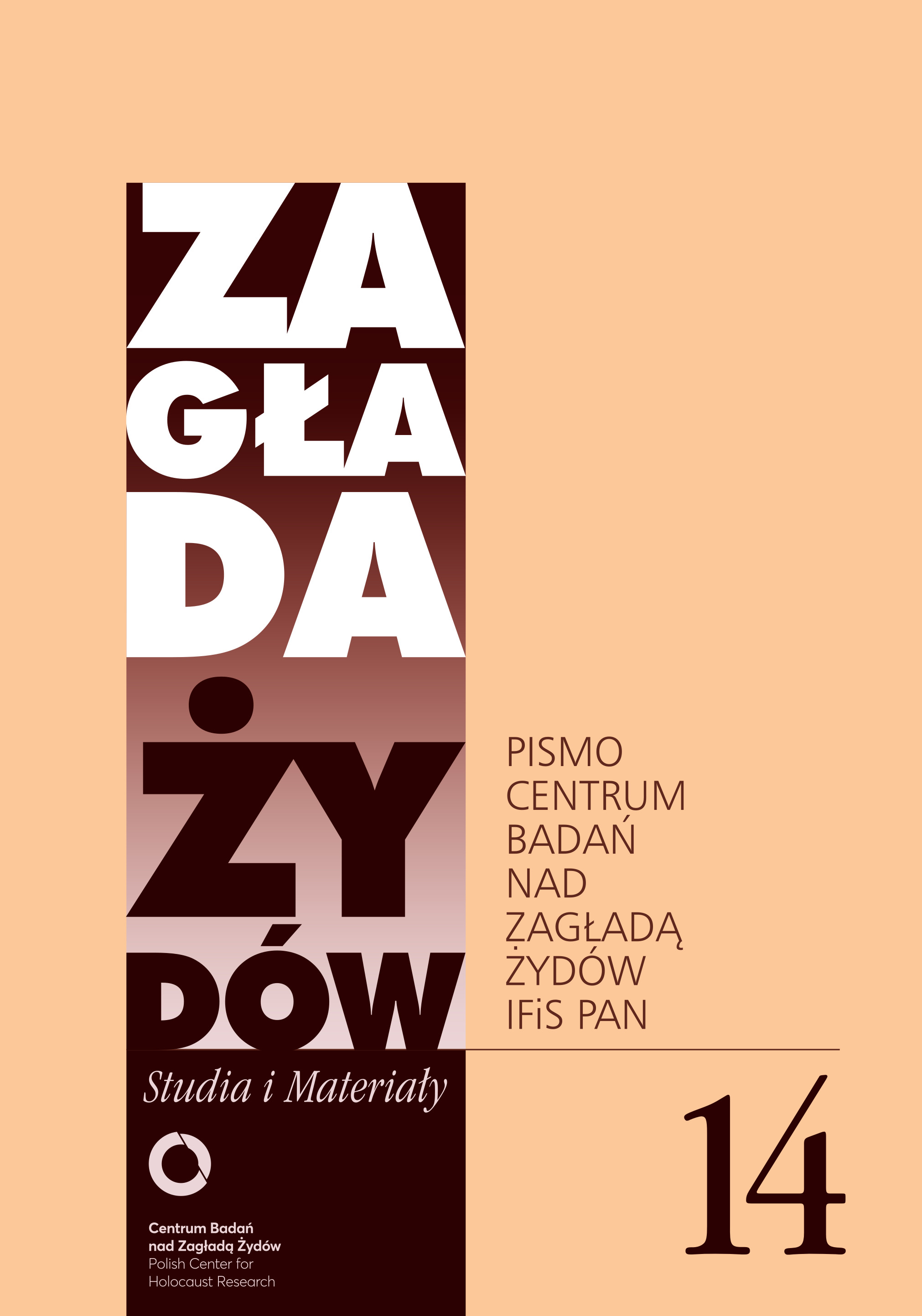„Polecieć tam, gdzie nie ma getta, szopu…” Dziennik Rutki Laskier między nekroestetyką a nekropolityką
“Oh, to Fly Where There Is No Ghetto, or Workshops…” Rutka Laskier’s Diary Between Necroesthetics and Necropolitics
Author(s): Marta TomczokSubject(s): Jewish studies, Fiction, Studies in violence and power, Victimology, History of the Holocaust
Published by: Stowarzyszenie Centrum Badań nad Zagładą Żydów & IFiS PAN
Keywords: diary; pop culture; materiality; retromania; memory conflict; Będzin;
Summary/Abstract: In this article I describe the phenomenon of the false historical object in Holocaust research by analyzing the three Polish editions of Rutka Laskier’s diary (with particular attention paid to the latest one). I show that a false historical object is a result of the loss of material/physical contact with the historical source and that it attempts to substitute the document. This is why editions of certain novels stylized as personal document literature eagerly imitate the old texts both in the visual layer (the reader is faced with the manuscript’s facsimile, sepia-colored paper, and old photographs) and in the layer of the events presented (in the novel its author does not always specify that it is fiction). This essay also presents the key mistakes made while rewriting Laskier’s diary by its publisher; analyzes the visual and material layer of its third edition (which follows the ‘not a single page without a photograph’ rule) in reference to the rules adopted by the Polish Center for Holocaust Research and the Jewish Historical Institute for editing diaries (particularly those written by adolescent girls); and discusses the conceptions of necroesthetics and necropolitics, derived from new humanities, in the context of the practical aspect of the popularization of the diary, the history of how it was transported, and the interest taken in its author (particularly her appearance). In the part devoted to the conclusions Tomczok wonders why this type of practices is not accompanied with deepened scholarly reflection and why there is a marked quantitative and qualitative difference between the scholarly editions of Laskier’s diary and those addressed to the general audience.
Journal: Zagłada Żydów. Studia i Materiały
- Issue Year: 2018
- Issue No: 14
- Page Range: 421-439
- Page Count: 19
- Language: Polish

